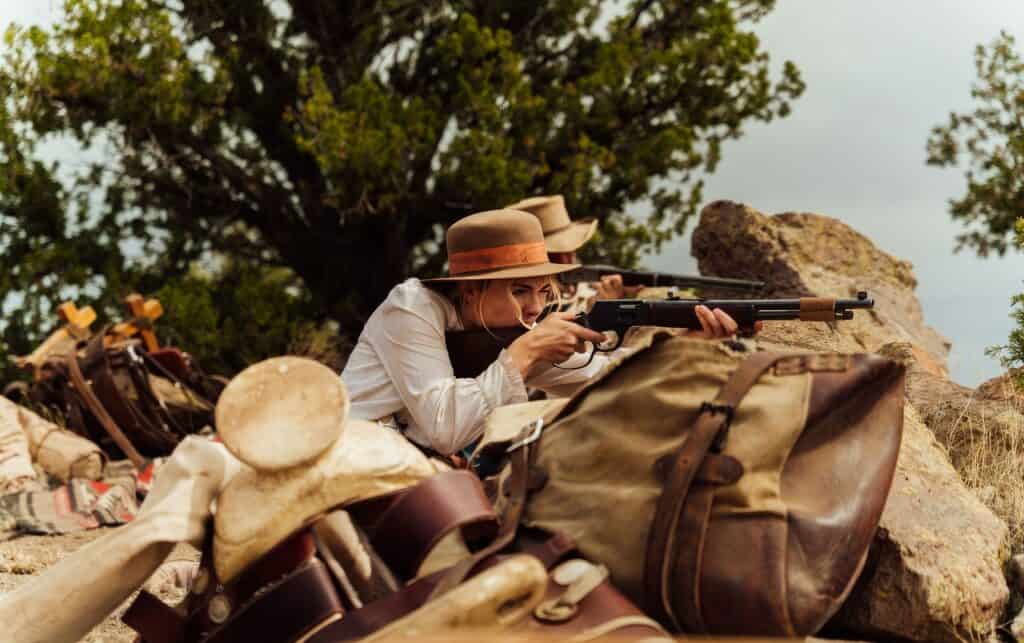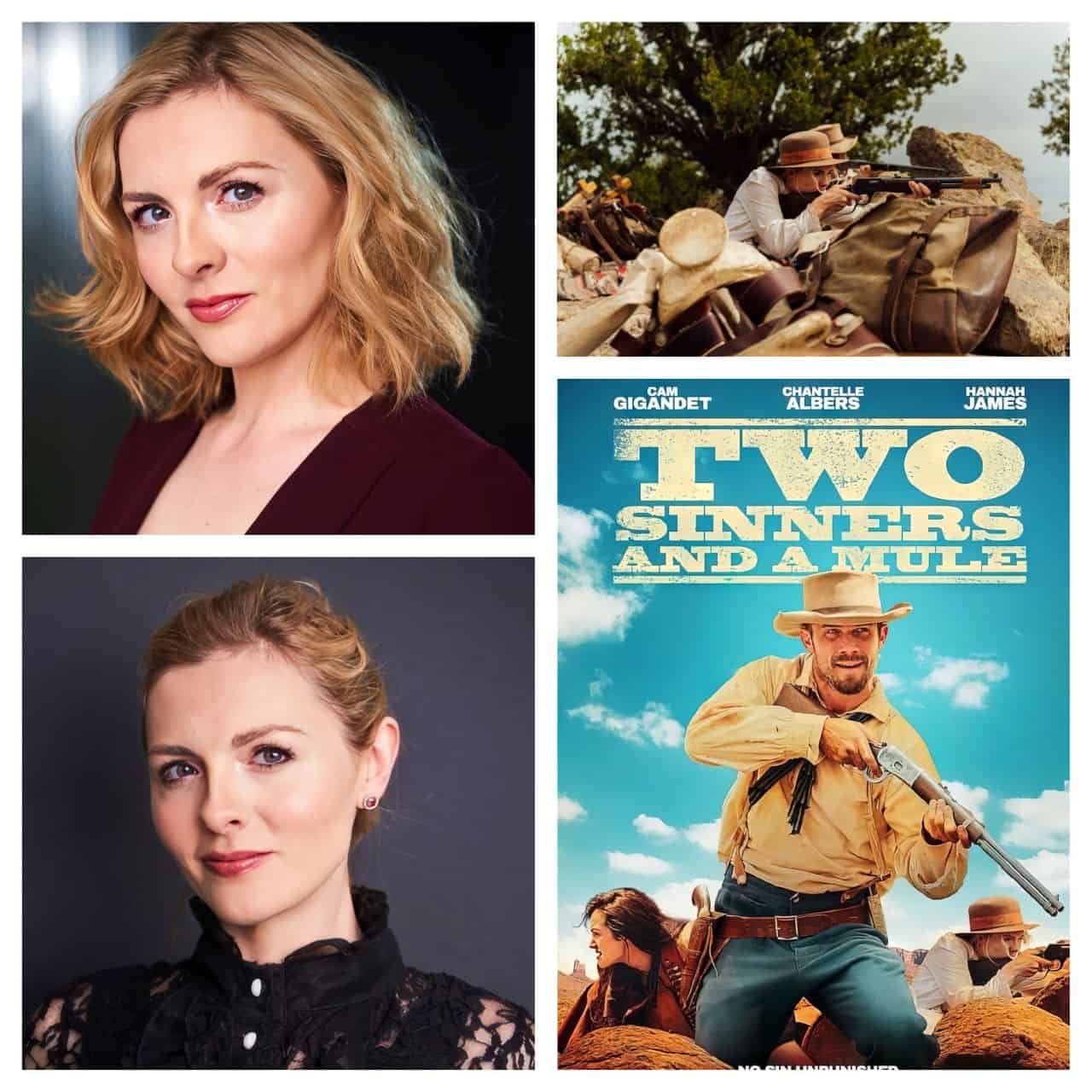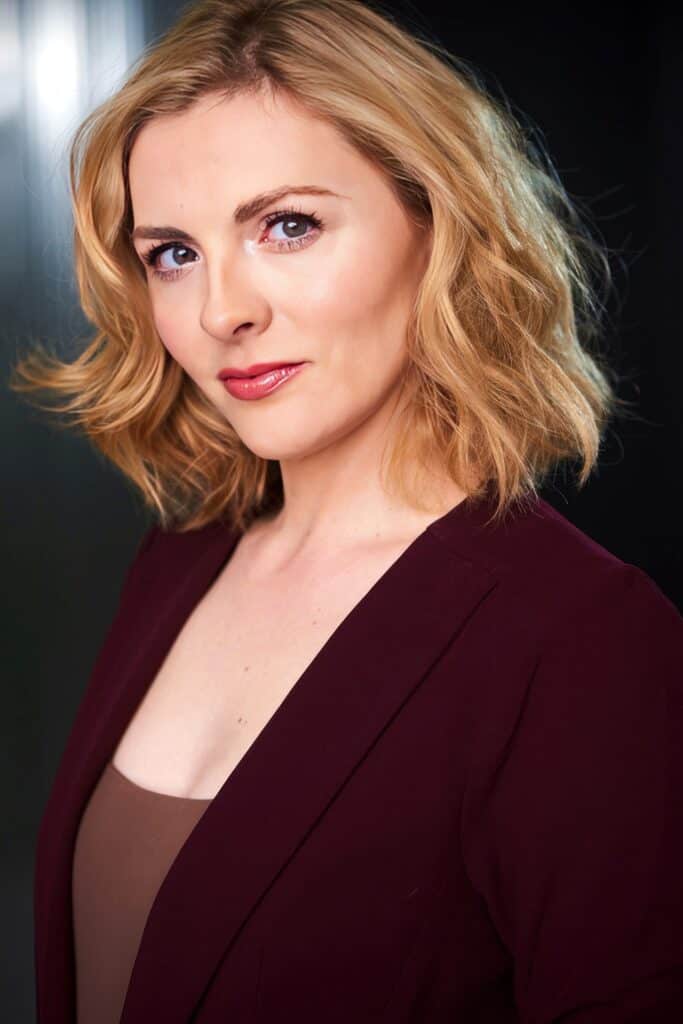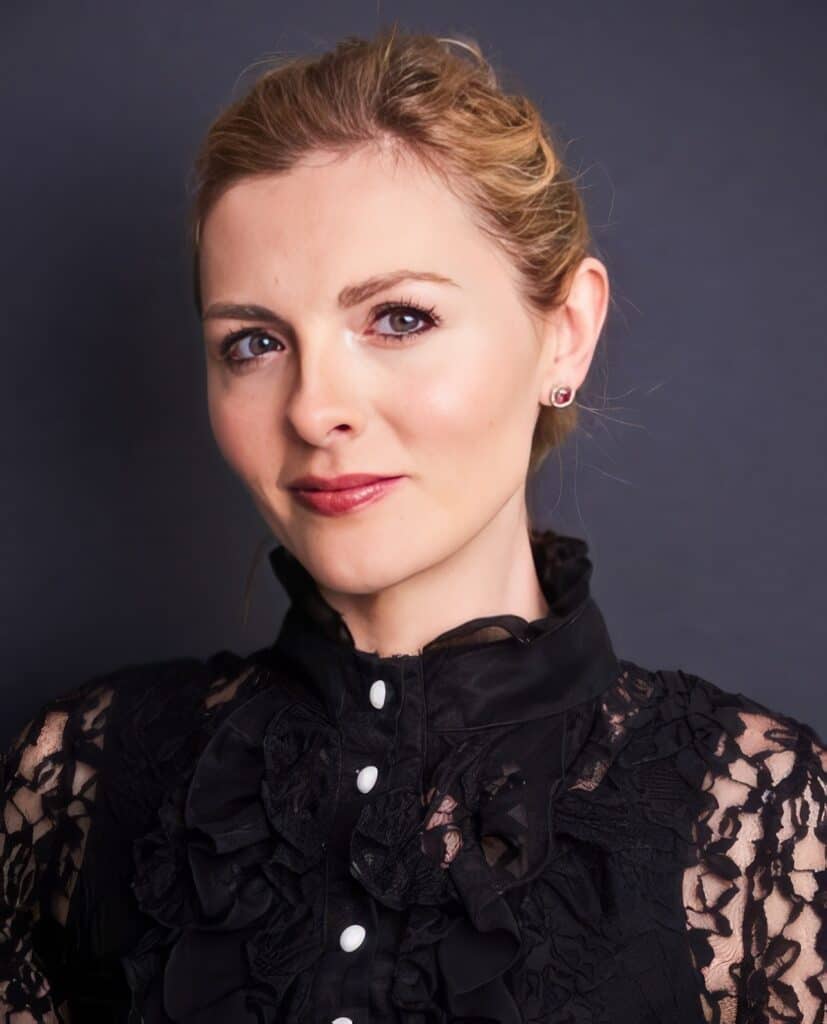Welcome to an insightful and engaging conversation with the multi-talented actress and producer Chantelle Ambers. In this interview, we delve into her latest film, “Two Sinners and a Mule,” a captivating blend of Western and thriller genres with a strong female twist. Chantelle shares her thoughts on what attracted her to this unique project and how it pushes the boundaries of traditional Western storytelling.
We also explore her dynamic roles, from complex characters in “The 6th Friend” to the challenging theater performance in “The Children’s Hour.” Join us as we uncover her journey and the impact of her diverse background on her artistic approach.
Q&A Interview With Chantelle Albers

Bourbon and Boots: Your latest film, “Two Sinners and a Mule,” combines elements of Western and thriller genres with a strong female twist. What attracted you to this unique project, and how do you think it pushes the boundaries of traditional Western storytelling?
Chantelle Albers: I think that the script of this movie was really innovative and had a lot of unique elements to it. It’s a period western that has strong female leads but balances it out with a male damsel in distress that at first needs saving because we find him wounded in the desert and unconscious. This turns it into a trio, where we all end up saving each other at some point. That dynamic in itself is a bit unique to the genre to have the females be the initial heroines. It also has elements of comedy, heartache, and dangerous adventure. The thing that I think makes this film stand out is the faith aspect and the evolution that Alice goes through as a person. She has quite a backstory, we find out halfway through the film, and by the end of the film, she is a whole new person than who she was in the beginning.
Can you tell us about the dynamics between the two complex female characters, Alice & Nora, and how their relationship drives the story forward?
Alice and Nora have two very different aspects of life from beginning to end. Alice says many times she wanted to get away from “sinning” as they were ladies of the night, but Nora flat out says she likes what she does. There’s definitely a character dynamic that drives them to better each other. Alice wants to help Nora change her ways, find forgiveness, and open up a restaurant. Nora, on the other hand, initially was the leader of the two, the protector. Nora stands her ground to protect Alice when they are captured in the covered wagon while on the road. Alice, in turn, develops bravery from Nora because she certainly was able to defend herself and kick some butt when they were captured in the covered wagon. In the end, Alice is the survivor that has been hardened by heartache but has grown because of it.
The American West has a rich history and symbolism, often associated with the spirit and struggle of the frontier. How does the setting of “Two Sinners and a Mule” contribute to the narrative and the character development in the film?
Alice and Nora get kicked out of town by The Women’s Decency League at the beginning of the film, and they are out on the road by themselves on horseback. So right away, we see the struggle of the American West. When you don’t have the luxuries of modern-day technologies, it adds to a lot of struggle to one’s journey. Because of the struggle of the frontier, people didn’t travel long distances as much back then as they do now. Alice tells her backstory of how she became a “sinner” and how she grew up in Georgia, on the other side of the country where this takes place. The fact that she has no way of traveling back home leaves her with a sense of feeling stuck, and that’s why I think Alice sees it as a new beginning when they get kicked out of town. Today we take for granted the luxuries of travel and medicine that they didn’t have during their time on the frontier. It’s absolutely the struggle that shapes Alice’s character from beginning to end. She is completely made new throughout the film and is a new woman by the end.
In addition to acting, you also produced the popular female horror film “The 6th Friend.” What motivated you to take on a behind-the-scenes role, and how did it influence your approach to storytelling?
I love being a filmmaker and having a role in the filmmaking process. I think it makes you a better actor when you understand editing, lighting, camera angles, putting a crew together, etc. It helps you understand how the end product is made, and it is very rewarding to say that you made a film and were involved in every aspect of creating it. When you are producing a film, you have the final say over the editing, the sound, and all the technical aspects, so you really get to put your touch on it in a collaborative way because we had a lot of great people working on the movie with us. When producing The 6th Friend, my partner and I had the final decision on the storytelling of the movie because we were involved in every step of the post-production process. As a film actor, you give up your storytelling when it goes to the editor. That’s the difference between theatre vs film; in theatre, you always have control over your final performance.
“The 6th Friend” received accolades at the Madrid International, including Best Feature and Best Actress for your performance. How did it feel to have your work recognized internationally, and what impact do you think the film has had on the horror genre?
It was such an honor to go to Spain for a film that was so close to me. My team and I were so excited that it was so well received and that people enjoyed it, including the ending! That was my first time in Spain, and I enjoyed it so much. It’s such a thrill to go to other countries and see the architecture, the culture, the food, and the way of life in other places. It was such an honor to be internationally recognized for this film, and I’m so happy that it was well received. Horror movies tend to be quite popular internationally. I’m glad that this female horror film was one of them that could make an impact on the international market.
You won the Irene Ryan Theatre Award for your role as Karen Wright in “The Children’s Hour.” What aspects of playing this character challenged you the most, and how did you prepare for the role?
The Children’s Hour is a very heavy play that ends in a tragedy that unfolds onstage. The trauma that Karen has to go through is one that most people don’t experience in life, at least we hope. When you go there emotionally as an actor and experience something as tragic and as heavy as Karen does in that show, it gives you a lot to work with, and you can make choices as the character that can be dangerous on stage because it’s unpredictable. That’s what I find most compelling about acting; when you are so in character, you don’t really know what is going to happen next, but it’s organic and dangerous. That’s why they say animals are so dynamic on stage, they’re unpredictable, and you don’t know what they will do next, so there is a sense of danger and excitement.
Growing up on a ranch in North Dakota and learning to ride a horse at a young age, how did your background and connection to nature influence your approach to acting and storytelling?
Growing up on a ranch and being around animals, I think, helps develop your empathy for other people as well as animals. You see the struggle that animals go through with rough winter weather and hot summers. It’s a lot of work to care for them full-time and to make sure all the animals are healthy. It makes you appreciate life and empathize with others which is a trait in acting that adds another layer to make the work compelling. When a character is fighting for something or has a strong feeling for something but also has empathy for the other side, there is a layered emotion that brings it to another level.
Los Angeles is known as the hub of the entertainment industry. How has living in this vibrant city shaped your artistic journey, and what opportunities and challenges have you encountered along the way?
LA is definitely home for me after all these years of living here. Someone told me a long time ago that it’s important to get out of the city and connect with other places in order to stay sane in this city because it’s such a rat race. I think there is a lot of validity to that point, and getting away from it all can help clear your head to keep going artistically. LA is a bright, vibrant hub of great food, endless entertainment, a 24/7 city, amazing beaches, mountains, art, sporting events, etc. There is so much stimulus there that it’s actually relaxing to get away and go to a smaller city for a break. But in the end, all roads lead back to LA, so it’s always home. I’ve had many challenges as well as opportunities over the years, and in this industry, it’s always full of ups and downs for everyone. LA has made me appreciate all the performance art that’s here, and I’m able to learn so much just from being around it.
With your diverse range of roles in Westerns, horror films, and theater productions, what types of characters or genres are you most drawn to, and why? Is there a dream role or project you have in mind for the future?
You know, I have to say I love all genres, and I’m so thankful that I’ve been able to play so many different roles and had the opportunity to explore a wide range of characters. Melissa in The 6th Friend is nothing like Alice in Two Sinners and a Mule, Lol! I have to say that I am really drawn to comedy, and it’s always been a favorite of mine. I currently have an original script that one of my favorite playwrights wrote, which is a two-person play and a dark comedy. Josh Duhamel (Transformers) and I are both from North Dakota, and he has been working with North Dakota on tourism. I think it would be a lot of fun for us to do a comedic play to promote tourism to our state.
Wrapping Up
Chantelle Ambers, with her unwavering passion and multifaceted talents, continues to captivate audiences with her boundary-pushing performances. From the gritty landscapes of the American West to the chilling depths of the horror genre, Chantelle fearlessly embraces diverse roles, enriching storytelling with her unique perspective.
Instagram: chantellealbers
Facebook: actresschantellealbers
LinkedIn: chantelle-albers-784243169
With her background deeply rooted in nature and empathy, she infuses her characters with authenticity and emotional depth. As we eagerly anticipate her future endeavors, including the possibility of a comedic play with fellow North Dakotan Josh Duhamel, it is evident that Chantelle Ambers is a force to be reckoned with in the world of entertainment.




